What Is a Bid-Ask Spread, and How Does It Work in Trading?
Generally speaking, the larger the spread, the less liquid the stock is. If the stock is especially illiquid, there is a danger that a large order could forex broker listing cause the price to fall due to slippage. In bond markets, these quotes represent the most favourable terms at which you can buy or sell a bond.
The spread is also called the bid-offer spread, bid/ask or buy-sell spread. If you submit a market sell order, you’ll receive the lowest buying price, and if you submit a market buy order, you’ll receive the highest selling price. If you want your order placed almost instantly, you can choose to place a market order, which goes to the top of the list of pending trades.
A buy bid is the maximum price a buyer is willing to pay for a specific asset. In stock trading, the bid is essentially an offer to purchase a certain number of shares at a particular price. When you place a limit order, you’re essentially setting your bid price.
In stock trading, the bid price refers to the highest price that a buyer is willing to pay for a certain security, and the ask price refers to the lowest price that a seller will accept. When the bid price and ask price are very close, it means there is plenty of liquidity. Having plenty of liquidity means it is much easier to buy or sell the security at a competitive price, especially if the order size is large. On the other hand, when the bid-ask spread is wide, it can be difficult and expensive to trade the security. No, bid and ask prices can vary significantly across different securities and assets. Highly liquid and actively traded securities typically have tighter bid-ask spreads, while less liquid or thinly traded assets may have wider spreads.
If you’re trying to buy a security, your bid price has to match a seller’s ask price. In that sense, you buy at the ask price, and the seller sells at your bid price. The difference between the bid and the ask is referred to as the « bid-ask spread. » Popular stocks and ETFs have tight spreads, while wide spreads could indicate a lack of liquidity. Suppose you want to buy 100 shares of a publicly traded company called Bluth’s Bananas. If you’d placed a buy order with your broker, you’d pay the ask price of $10.02, which means you’d pay $1,002 for 100 shares instead of the $1,000 you’d have paid at the bid price.
If the current bid on a stock is $10.05, a trader might place a limit order to also buy shares for $10.05, or perhaps a bit below that price. If the bid is placed at $10.03, all other bids above it must be filled before the price drops to $10.03 and potentially fills the $10.03 order. The bid price represents the highest-priced buy order that’s currently available in the market. The ask price is the lowest-priced sell order that’s currently available or the lowest price that someone is willing to sell at. The difference in price between the bid and ask prices is called the « bid-ask spread. »
Fees are another important aspect to consider as they could erode your returns and overall investment results. A brokerage account is essentially the platform where you execute a market order. Different types of brokerage accounts offer varied rates, fees, and position-holding conditions. When considering the type of market order to place, be mindful of these factors. Before you even think about becoming profitable, you’ll need to build a solid foundation. That’s what I help my students do every day — scanning the market, outlining trading plans, and answering any questions that come up.
Understanding Bid and Ask Prices
She has worked in multiple cities covering breaking news, politics, education, and more. The amount of cash you have can determine the positions you can hold and, consequently, the types of market orders you can kvb forex execute. Advanced strategies are for seasoned investors, and beginners may find themselves in a worse position than they began. The broker’s commission is not the same commission you’d pay to a retail broker.
- A narrower spread indicates higher liquidity, while a wider spread suggests lower liquidity.
- What buyers look at when considering bid and ask prices for Precious Metal sales is the amount of bullion a customer plans on selling.
- In my years of teaching, I’ve always emphasized the importance of understanding the bid-ask spread.
- This strategy allows you to trade a group of securities in a single transaction, potentially diversifying your portfolio.
- If an investor places a market order to buy 1,000 shares of a stock, and the ask price is $110, that’s the price the trade will be executed at.
A bid-ask spread is the amount by which the ask price exceeds the bid price for an asset in the market. The bid-ask spread is essentially the difference between the highest price that a buyer is willing to pay for an asset and the lowest price that a seller is willing to accept. For example, assume Morgan Stanley Capital International (MSCI) wants to purchase 1,000 shares of XYZ stock at $10, and Merrill Lynch wants hotforex broker review to sell 1,500 shares at $10.25. The spread is the difference between the asking price of $10.25 and the bid price of $10, or 25 cents. Also, the more liquid, the smaller the spread will be between the bid price and the ask price. Dealers often list the items they are interested in buying, and a list with the bid price and ask price so you can see the spread — the cost of selling Precious Metals — on the market.
What is the bid-ask spread?
A market sell order will execute at the bid price (if there is a buyer). The mechanics of the trade vary depending on the type of order placed. However, the general process involves brokers submitting an offer to a stock exchange. Each offer to purchase includes the number of shares requested and a proposed purchase price.
This is quite beneficial to the seller, as it puts a second pressure on the buyers to pay a higher price than if there was a single prospective buyer. For example, if the current stock quotation includes a bid of $13 and an ask of $13.20, an investor looking to purchase the stock would pay $13.20. For example, if an investor wanted to sell a stock, he or she would need to determine how much someone is willing to pay for it. It represents the highest price that someone is willing to pay for the stock. On the other hand, securities with a “wide” bid-ask spread (where the bid and ask prices are far apart) can be time-consuming and expensive to trade. If the bid price for a stock is $19 and the ask price for the same stock is $20, then the bid-ask spread for the stock in question is $1.
What Is a Buy Bid?
By contrast, assets with a wide bid-ask spread may have a low volume of demand, therefore influencing wider discrepancies in its price. The size of the bid-ask spread from one asset to another differs mainly because of the difference in liquidity of each asset. Certain markets are more liquid than others, and that should be reflected in their lower spreads. Essentially, transaction initiators (price takers) demand liquidity while counterparties (market makers) supply liquidity. When the bid and ask prices are close together, it usually indicates a more liquid market. A narrow bid-ask spread means that there’s a high level of agreement between buyers and sellers on the asset’s value.
On the Nasdaq, a market maker will use a computer system to post bids and offers, essentially playing the same role as a specialist. The terms spread, or bid-ask spread, is essential for stock market investors, but many people may not know what it means or how it relates to the stock market. The bid-ask spread can affect the price at which a purchase or sale is made, and thus an investor’s overall portfolio return. The name “ask” price refers to the fact that you’re basically asking to buy an asset at X price.
Example of bid and ask
Websites, or “sites,” where you find information about an asset can also offer insights that affect your trading decisions. These sites might provide reviews, expert opinions, or other “things” that could offer you a different perspective on the buy bid and ask price. The “gap” is the difference between the buy bid and ask price, often expressed as a percentage of the asset’s overall value. Knowing this percentage can help you better understand market valuation and decide whether it aligns with your investment goals.
In my years of trading and teaching, I’ve found that understanding the bid and ask prices is like knowing the ABCs of trading. Whether you’re a newbie or a seasoned trader, this article will break down the complexities of buy bid and ask prices, helping you make smarter trading decisions. Under competitive conditions, brokerage fees tend to be small and don’t vary. In such cases, the bid-offer spread measures the cost of making transactions without delay.
The bid-ask spread serves as an effective measure of liqudity, as more liquid securities will have small spreads while illiquid ones will have larger ones. Investors should keep an eye on the spread of any security they wish to buy or sell to get a sense for how frequently it trades and to decide on the type of order to use when making a transaction. On the other hand, less liquid assets, such as small-cap stocks, may have spreads that are equivalent to 1% to 2% of the asset’s lowest ask price. The bid-ask spread can be considered a measure of the supply and demand for a particular asset. The bid can be said to represent the demand for an asset, and the ask represents the supply, so when these two prices move apart, the price action reflects a change in supply and demand. A security’s price is the market’s perception of its value at any given point in time and is unique.
The market sets bid and ask prices through the placement of buy and sell orders placed by investors, and/or market-makers. If buying demand exceeds selling supply, then often the stock price will rise in the short-term, although that is not guaranteed. The bid-ask spread is the difference between the bid price and the ask price of a security or asset. It represents the transaction cost or the profit margin for market makers. A narrower spread indicates higher liquidity, while a wider spread suggests lower liquidity. Liquidity can significantly impact the determination of bid and ask prices.




